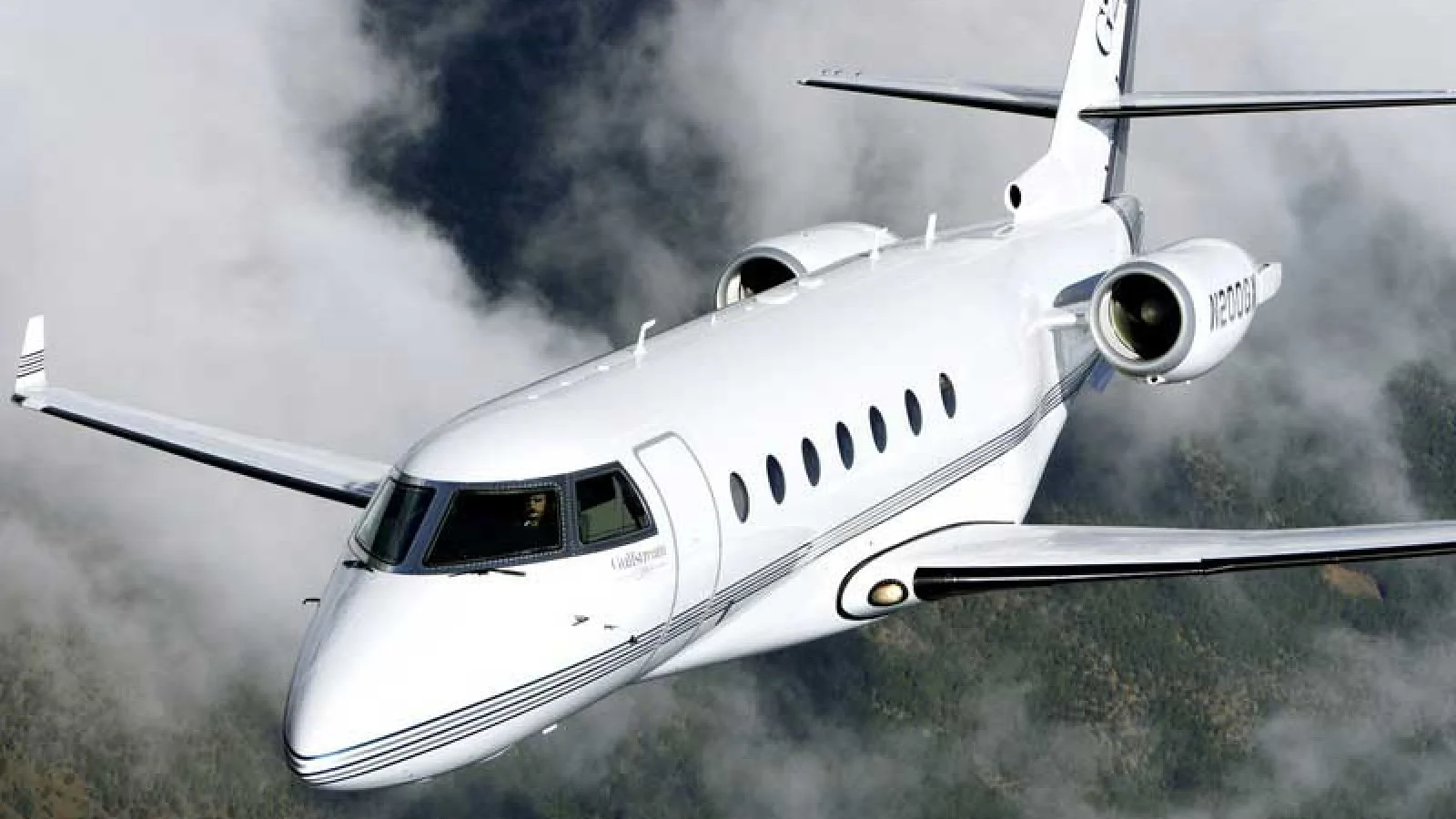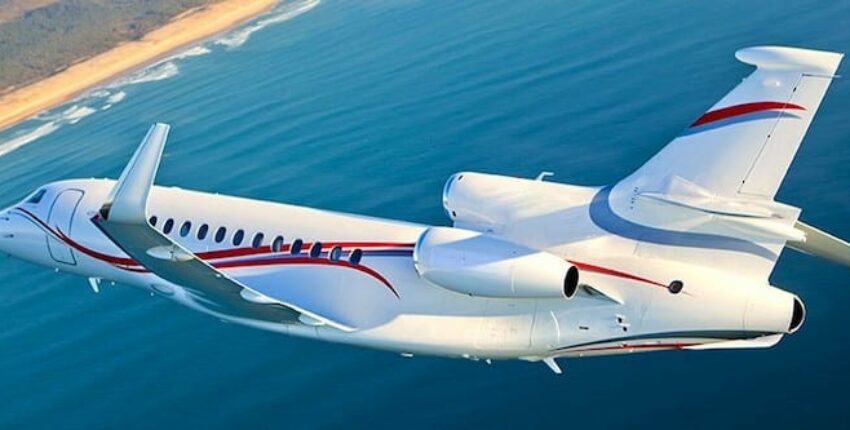Gulfstream G200 Review (1999): The Super-Mid Jet That Still Holds Its Own
8 min read

The Gulfstream G200 may not be the newest or flashiest jet in the Gulfstream lineup, but it’s got a charm that refuses to fade. With its stand-up cabin, impressive range, and a price tag that’s surprisingly reasonable on the pre-owned market, this super-midsize business jet still makes a strong case for itself.
It’s the kind of aircraft that quietly gets the job done, whether you’re crossing continents for business or slipping away for a long-haul getaway.
History & Development

The Gulfstream G200 didn’t start life with a Gulfstream badge. In fact, its origins go back to Israel Aircraft Industries (IAI), which designed the jet in the 1990s under the name “IAI Galaxy.” The first flight took place on Christmas Day in 1997, and by 1999, deliveries were underway. The Galaxy was meant to be a long-legged, super-midsize business jet that could bridge the gap between small corporate aircraft and larger intercontinental machines.
The big change came in 2001, when Gulfstream Aerospace purchased Galaxy Aerospace. Gulfstream saw the potential, gave the jet its current name, and refined the marketing and support network to match the Gulfstream standard.
From then on, the G200 built a solid reputation in the super-midsize class. Production ran until December 2011, with a total of 250 units built; a decent run for a niche category that demands a lot from its designs.
Performance Details
The G200 is powered by a pair of Pratt & Whitney Canada PW306A turbofan engines, each producing between 5,700 and 6,040 pounds of thrust. That’s not over-the-top power for the class, but it’s well matched to the airframe. Once in the air, the G200 cruises comfortably between 459 and 470 knots, about 530 mph, or Mach 0.8, fast enough to make coast-to-coast runs without feeling sluggish.
Range is one of its biggest strengths. Depending on payload and weather, you’re looking at 3,100 to 3,400 nautical miles of practical range, with ferry flights stretching closer to 3,530 nm. This means nonstop legs like New York to London are within reach under the right conditions.
The service ceiling is 45,000 feet, and with a climb rate of about 3,700 feet per minute, the G200 gets to the thin air efficiently. That altitude flexibility helps it dodge weather and traffic while sipping fuel a little more gently at cruise.
Cabin

Here’s where the G200 really punches above its weight. The cabin stretches about 24.5 feet long, 7.2 feet wide, and just over 6.25 feet high. That makes it genuinely stand-up friendly for most passengers, something not every midsize jet can claim. With an interior volume of around 869 cubic feet, there’s enough space for 8–10 passengers without feeling cramped.
Most layouts split the interior into two seating zones, giving you flexibility for business meetings in one section and relaxation in the other. A fully enclosed lavatory is standard, and the galley is well equipped for long trips, with options like a microwave, catering space, and decent storage.
The seating itself is where Gulfstream’s influence shines. The plush, wide chairs and thoughtful lighting make even long legs feel more like a lounge than an airborne tube. If you’re used to smaller jets, the difference is night and day.
Tech & Avionics
From the cockpit forward, the G200 features the Collins Pro Line 4 avionics suite with an EFIS (Electronic Flight Instrument System) display. While this setup is proven and reliable, it dates back to the late 1990s and early 2000s. Many operators opt for upgrades to keep pace with current navigation and airspace requirements, but in its day, it was one of the best systems in the category.

The jet also comes with aerodynamic features designed to improve performance, such as winglets and Krueger flaps, which help with field performance, important when operating out of shorter runways.
De-icing is handled with rubber boots, and an auxiliary power unit (APU) keeps systems like air conditioning and lighting running on the ground without needing the engines. For passengers, this means you can board a cool, comfortable aircraft even if the engines aren’t turning yet.
Operating Costs
This is where owning and flying the Gulfstream G200 gets real, because while it’s a fantastic aircraft on paper, keeping it in the air isn’t exactly cheap. Depending on which source you trust, the hourly operating cost can vary quite a bit, but everyone agrees it’s a significant budget item.
Take Air Charter Advisors, for example. They estimate the cost to operate a G200 at about $2,800 per flight hour. That might sound manageable if you only fly 200 hours per year, coming out to roughly $1.1 million annually. But if your flying hours double, costs naturally rise. Conklin & de Decker’s numbers reflect this, showing around $6,149 per hour if you’re clocking 400 hours annually, which totals about $2.46 million a year. GlobalAir’s figures align closely, estimating about $6,510 hourly and a similar annual total of $2.5 million.
So why the big spread? It mostly comes down to how these estimates factor in fixed and variable costs. Fixed costs, things like hangar fees, insurance, and management, don’t care if you fly or not. Then there are variable costs, like fuel, maintenance, and crew salaries, which go up the more you fly. Fuel alone is a major chunk, with the twin PW306A engines sipping a fair amount to keep the plane moving at nearly Mach 0.8. Maintenance costs can be surprisingly high, especially as the aircraft ages and requires more frequent inspections or parts replacements.
And don’t forget avionics upgrades, since the G200 uses the older Collins Pro Line 4 system, many owners spend extra to keep the cockpit compatible with evolving air traffic requirements, especially if flying internationally. Those upgrades can be pricey, but they help avoid operational restrictions and keep the jet flying smoothly in busy skies.
In summary, the G200 offers great value upfront, especially on the used market, but you’ll want to be realistic about the total cost of ownership. It’s a robust, comfortable jet, but like all super-midsize aircraft, it demands a serious commitment when it comes to budgeting.
Competition
The Gulfstream G200 didn’t enter the market lightly; it landed in a highly competitive super-midsize business jet class where every player is fighting to balance range, cabin comfort, speed, and cost.
One of its fiercest competitors was the Bombardier Challenger 300. These two are practically neck and neck when it comes to cabin volume; the G200 offers around 869 cubic feet, and the Challenger comes in just a bit smaller at 860. That means both jets can comfortably seat around eight to ten passengers in similarly spacious environments. However, the Challenger 300’s Honeywell engines deliver slightly more thrust, giving it a small edge in climb performance and sometimes speed. Despite this, the G200 generally edges out the Challenger on operating costs, with hourly expenses that tend to be a little lower, always a key consideration for operators watching the numbers closely.
Then there are other notable jets in the mix, like the Hawker 4000, which brought a composite airframe to the class, the Cessna Citation X, known for its blazing speed, and the Embraer Legacy series, praised for modern systems and efficient performance. While the Citation X can leave the G200 in the dust on speed, it can’t match the Gulfstream’s roomy, stand-up cabin—something that counts a lot on longer trips.
Gulfstream eventually introduced the G280 as the G200’s successor. The G280 refined almost every aspect: it’s more fuel-efficient, boasts upgraded avionics to handle today’s complex airspace, and keeps the generous cabin size that Gulfstream customers expect. The G280 also benefits from newer materials and aerodynamic improvements, which help reduce operating costs and environmental impact.
Still, in the pre-owned market, the G200 remains a solid competitor. Its lower price point compared to the G280 and other newer super-midsize jets means it can appeal to budget-conscious buyers who need long-range capability without the sticker shock. With the right maintenance and avionics upgrades, the G200 can still deliver many years of comfortable, capable flying—making it a smart choice for those who want Gulfstream quality without paying Gulfstream-new prices.
Pros
One of the G200’s biggest draws is its range. Being able to handle transcontinental and certain transatlantic flights without stopping makes it a serious business tool. The cabin comfort is another highlight; you get true stand-up height and wide seating that’s rare for the price you’ll pay on the used market.
The Pro Line 4 avionics, while dated, are reliable and familiar to many pilots, and the aircraft has a solid track record for dependability. Perhaps most appealing, pre-owned examples can range from $2.4 million to $6 million, making it a lot of airplane for the money compared to buying new.
Cons
On the flip side, the avionics do need attention if you want modern compatibility, which means upgrades can add significantly to your initial outlay. The operating costs are also high; there’s no getting around $4,000–$6,000 per flight hour once you factor in everything. And because production ended in 2011, you won’t get the latest fuel-saving technologies or aerodynamics you’ll find in its successor, the G280. For some buyers, that’s enough to push them toward newer models despite the higher acquisition price.
Final Verdict
The Gulfstream G200 is one of those jets that quietly delivers. It doesn’t have the flash of the Citation X’s speed or the Challenger 300’s marketing push, but it nails the fundamentals: long range, a big and comfortable cabin, and proven systems.
For operators who value space and capability over cutting-edge tech, it’s a fantastic value in today’s pre-owned market. Yes, you’ll spend more per hour than with a smaller or newer jet, but the acquisition cost can offset that if your utilization is modest. With the right avionics upgrades, a well-maintained G200 can serve as a reliable and comfortable workhorse for years to come.
In short, if you want a Gulfstream badge, serious range, and a cabin that feels more like a living room than an airplane, and you’re okay with the operating costs, the G200 still makes a lot of sense.







